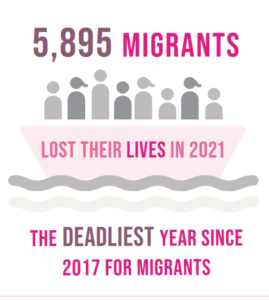MOBILITY
Read different perspectives on mobility in relation to Global Citizenship Education and youth work.
Definition of mobility as movement in space

Both facts have an impact on the emission of CO2 into the atmosphere. Some people, including some young people, are victims of this rapid and cheap consumption, leading them to consume a lot and often. This leads to an increase in carbon dioxide emissions into the atmosphere (transport of raw materials and delivery of parcels) as well as a massive production of waste (plastic, electrical appliances with programmed obsolescence, poor quality clothes from fast fashion…) which will be, for some, recycled, but also (re)sent to the Global South for a possible, but little reuse (4). Often, the objects in question are in such poor condition or in such immense quantities that the people on the spot cannot process them. This waste is then accumulated in open dumps, but also in the sea. All this contributes to air, water and land pollution, climate change, the deterioration of




Mobility is at the heart of young people’s travel problems. Depending on their socio-economic and geographical background and their physical and mental capabilities, their mobility will take on a different dimension.
It is important to understand the point of view of young people in our immediate environment and then to pass on to them the point of view of young people in the Global South, of which they may also be a part and to which they can bring their testimony. As an example of associations working with young people in Occitania, there are the “Maisons des Jeunes et de la Culture”(MJC), Houses of Youth and Culture in english, in Occitania. There are 150 MJC in Occitania with 70,000 members and 1,500 volunteers. They are present in towns and in the countryside.

The mission of the Roudel association (11) is to promote meetings and exchanges between people, societies, languages and cultures.
Like the MJC, Roudel’s main objective is to organise meetings of young people to encourage exchange between them in a supervised manner (linguistic and intercultural animation methods, proposed activities to think about intercultural musters, identity…), but also during informal times (free time, meals, etc.). Even if, through its partnerships, Roudel focuses on exchanges with Germany among others, all young people are concerned, from all socio-economic backgrounds, whatever their education, language level or background, from 10 to 30 years old, as well as youth work actors in formal and non-formal education, affected by these international exchanges.
The focus is on young people who have little or no access to international mobility because of their place of residence (city – socially deprived districts – or countryside), their education, education level, their sexual orientation or gender, their ethnic origins or their disability (Young People with Fewer Opportunities (12) ).
Thus, Roudel proposes to look for partners in Germany, or even to organise an exchange for associations of the Solidarity and Social Economy and Popular Education, institutions, vocational training groups and individual young people to enable their public to experience what will often be a first mobility. The Association also offers training courses in intercultural animation or the Betzavta method as well as training meetings between youth work professionals between Germany and France.
The challenges of mobility in this context are therefore to find participants who are concerned with this age group and these objectives, who need to be motivated and persuaded that international mobility is important for their personal and professional development when they have not yet been made aware of it (social, linguistic and intercultural skills) with the help of local social and youth workers.
Intercultural encounters and activities during trips to another country or when hosting young people from abroad thus make it possible, consciously or unconsciously:
- To be aware of one’s own identity, values and orientations, opinions and perceptions
- To recognise and analyse one’s own actions, thinking and feeling in relation to one’s cultural roots (perception of self and other)
- To understand the other in the context of his/her socialization within another culture, to show respect and openness to different ways of life
- To be able to be open and flexible to new and unfamiliar situations, to be able to engage and behave appropriately
- To be aware of one’s own role, to be able to distance oneself from it and to change it (change of perspective)
- To be able to put oneself in the place of others and to feel that way (empathy)
- To know the mechanisms and functioning of prejudices and to perceive them in oneself
- To know on which levels differences can be hidden and to be curious about the meanings behind visible differences and the causes of their appearance
- To be able to consider differences and contradictions as normal, to tolerate them, to allow different views and values to coexist and to give them recognition (tolerance of ambiguity)
- To accept the stranger and the fact of not understanding (tolerance of frustration)
- Being able to communicate verbally and non-verbally
- To be aware that intercultural learning is a lifelong process and to be always willing to learn again (13)
All this allows young people to understand, deconstruct and fight against discrimination and intolerance processes to become better European citizens and build a peaceful future. It also helps to prepare welcoming and integrating refugees in general and climate refugees in particular, who will soon be more numerous due to climate change.
Other issues, such as the type of travel chosen by young people, which are increasingly sensitive to climate change (the Fridays for Future school strike movement – increasing eco-anxiety) and the idea of travelling in the post-Covid period may hinder some participants and their parents to think about a possible mobility abroad and the access to information about international mobility.
With climate change, air travel has also become a mode of transport to be avoided, and Roudel has made it its mission to favour train travel for its international meetings in order to limit the CO2 impact and to remain true to its values of fighting against climate change. It is also essential for Roudel to keep costs low for participants despite inflation, so that as many people as possible can still experience international mobility.
- https://sdgs.un.org/goals (15.02.23)
- https://en.unesco.org/themes/gced (21.02.23)
- https://thred.com/style/what-really-happens-when-we-throw-our-clothes-away/ (02.03.2023)
- https://www.youtube.com/watch?v=hAQP2NI9gcs (02.03.2023) – only available in France
- https://www.lepoint.fr/environnement/ (02.03.2023)
- https://www.rezopouce.fr/ (21.02.2023)
- https://www.interrail.eu/en/interrail-passes/global-pass (23.02.2023)
- https://www.unhcr.org/fr/convention-1951-relative-statut-refugies.html (21.02.2023)
- https://www.unhcr.org/what-is-a-refugee.html (23.02.2023)
- Enquête menée auprès du réseau de MJC d’Occitanie
- https://roudel.org/ (21.02.2023)
- https://www.ofaj.org/media/referentiel-de-formation.pdf (06.03.2023)
- https://sdgs.un.org/goals (02.03.2023)
- Pictures 1-5: https://sdgs.un.org/goals Dewi Glanville, (02.03.2023)
- Picture 6: MJC Aureilhan
